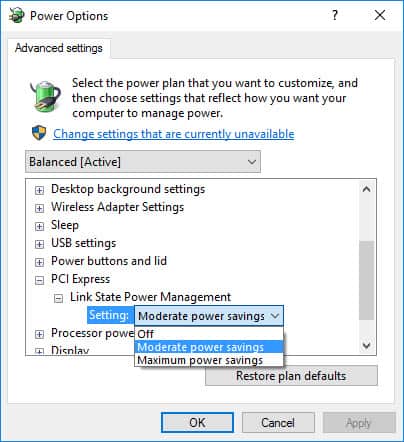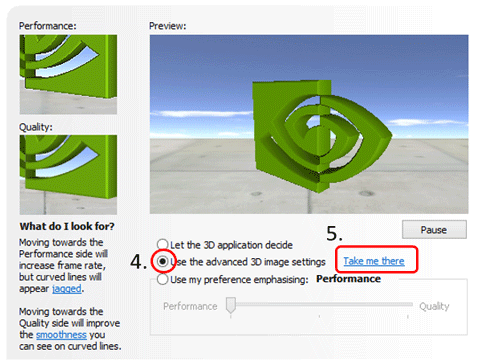

- #Nvidia power management mode optimal power or adaptive drivers#
- #Nvidia power management mode optimal power or adaptive driver#
- #Nvidia power management mode optimal power or adaptive Pc#
- #Nvidia power management mode optimal power or adaptive download#
Ambient Occlusion improves shadow detail and lighting effects noticeably, but can cause a significant drop in framerate especially with older hardware. The difference ambient occlusion can make.Īmbient Occlusion: This option is right at the top and our first item of interest.
#Nvidia power management mode optimal power or adaptive Pc#
You can read about graphics settings in more detail in PC graphics options explained. Any settings not mentioned here should be left at default values.Īnother important thing to note: there are two tabs for "Global settings" and "Program settings." If you want to make changes to an individual game, you can select its executable on the Program settings tab and, for example, override its anti-aliasing settings, but leave your global settings untouched.Īlmost every setting on the list can have a big effect on speed, quality, or both, but the following are the most important. Referring to these will help you pick the sweet spot for your rig and style of game. Do take screenshots and notes of all your settings changes and their effects, however. If you get in over your head, Nvidia has provided a handy "Restore" button to return the values to their defaults, so don't worry about experimenting. This panel is overflowing with options, and you can scroll through the box to see them all. Most of Nvidia's releases these days are WHQL certified.
#Nvidia power management mode optimal power or adaptive drivers#
Two versions of drivers are provided to users, a beta version that includes all the latest speed tweaks, and a certified WHQL version that's based on older code but is more stable and better tested. If you're worried about conflicts, you can uninstall the previous drivers beforehand, or select clean installation when updating with the newer version.

#Nvidia power management mode optimal power or adaptive driver#
Despite the large driver package, installation is swift and usually painless.
#Nvidia power management mode optimal power or adaptive download#
Nvidia keeps it easy with a single download page for all drivers, regardless of graphics card model.

Where to startīefore exploring the Nvidia Control Panel, make sure you're using the latest version. But what those settings do and where to find them can be confusing, so it pays to know which parts of the Control Panel to pay attention to. You can tune anti-aliasing and other specific settings for individual games or use the global settings to affect everything you play. You can configure Nvidia's G-Sync to work in games and on your desktop. Strongest man in the world can't lift much while balancing on one leg, yet a kid with half his strength standing on two feet, will lift more than he can.With a few simple tweaks, you can make games look dramatically better, run smoother, and more. You'll get more out of moderation across everything than pushing maximums in some things. With that in mind, maxing out power limits can be detrimental to performance because now power isn't as much a limited factor, which can stress other components, allow too much amperage or voltage use, create more heat, which raises resistances in inductors etc. So even if temps are good in the nemory, voltages might be high on the gpu or in the VRM's or you might have hit physical limits in the caps or inductors etc. The clocks will stop boosting up when some component reaches what the card considers its max tolerance. You'll see boosting upto a certain amount but that's governed by multiple things, not just temps in one area like memory, but also the gpu, the gpu voltages, VRM's, power limits, etc. The guides are a guide, a tool, not Gospel or Canon, and don't necessarily work the same on different cards.īoost clocks are an OC, by the factory, so there's no guarantee of any one particular speed. If they immediately drop, power limit isn't the issue, something else is holding the card and you aren't seeing maximum applicable Boost, which could be gpu temps, airflow, memory clocks, gpu voltage etc. If scores maintain, or go up, keep dropping power limit until you peak out and scores start dropping. I'd use TimeSpy to test the card, starting with max power limit, then start dropping it slowly and testing in between.

Setting max power limits increases voltages and amperage (ie Power) and often that will be detrimental to Gpu Boost as temps will throttle performance. And that's not the only game that does that, but is a more extreme case. Even a 100% power limit set on the card shows averages closer to 107%-109%. If you OC your card to 107% power limit, then play Amazon's New World, you'll cook your card if it doesn't immediately throttle down as power limits will see North of 120%. They only apply to specific things, not a general use case.


 0 kommentar(er)
0 kommentar(er)
